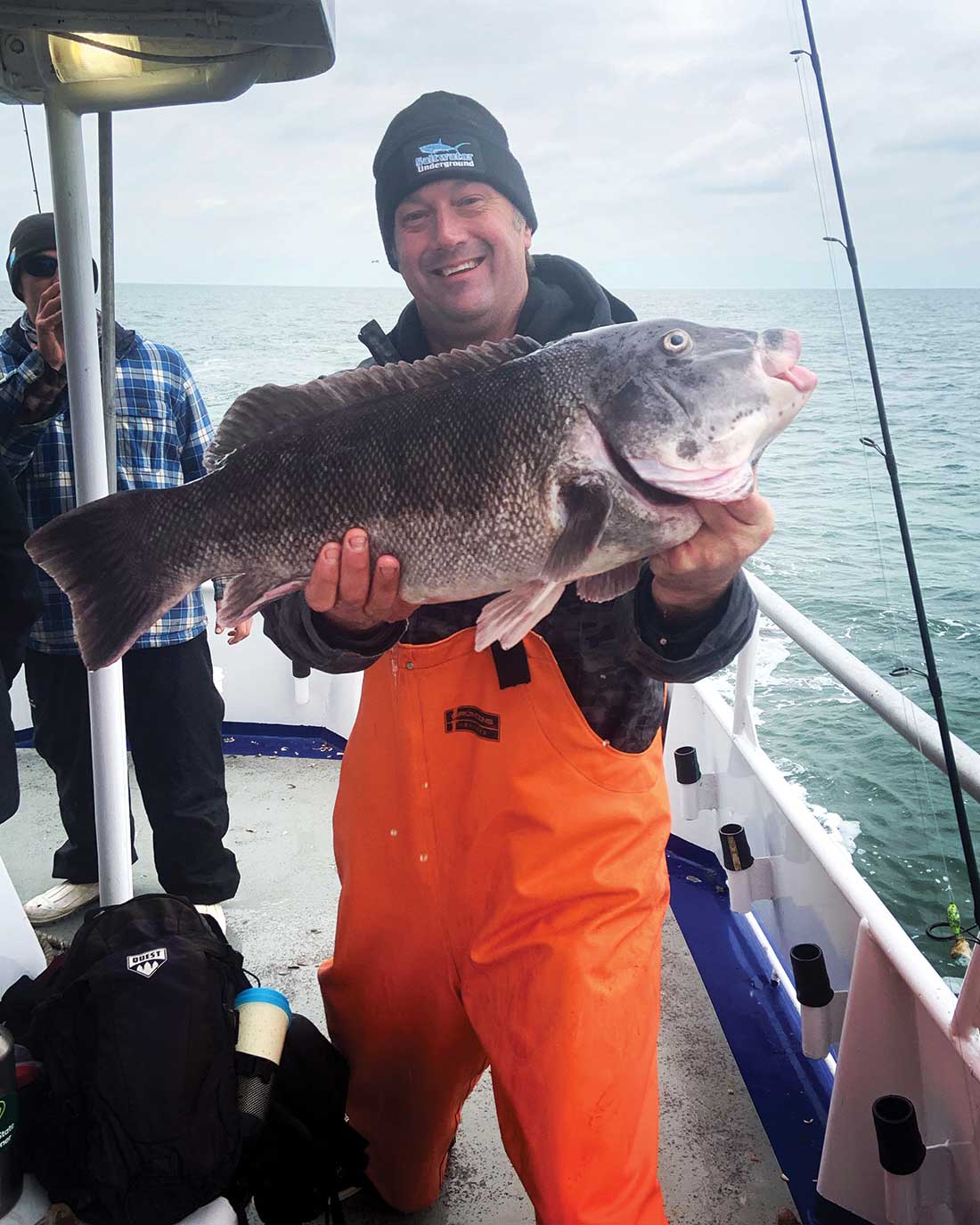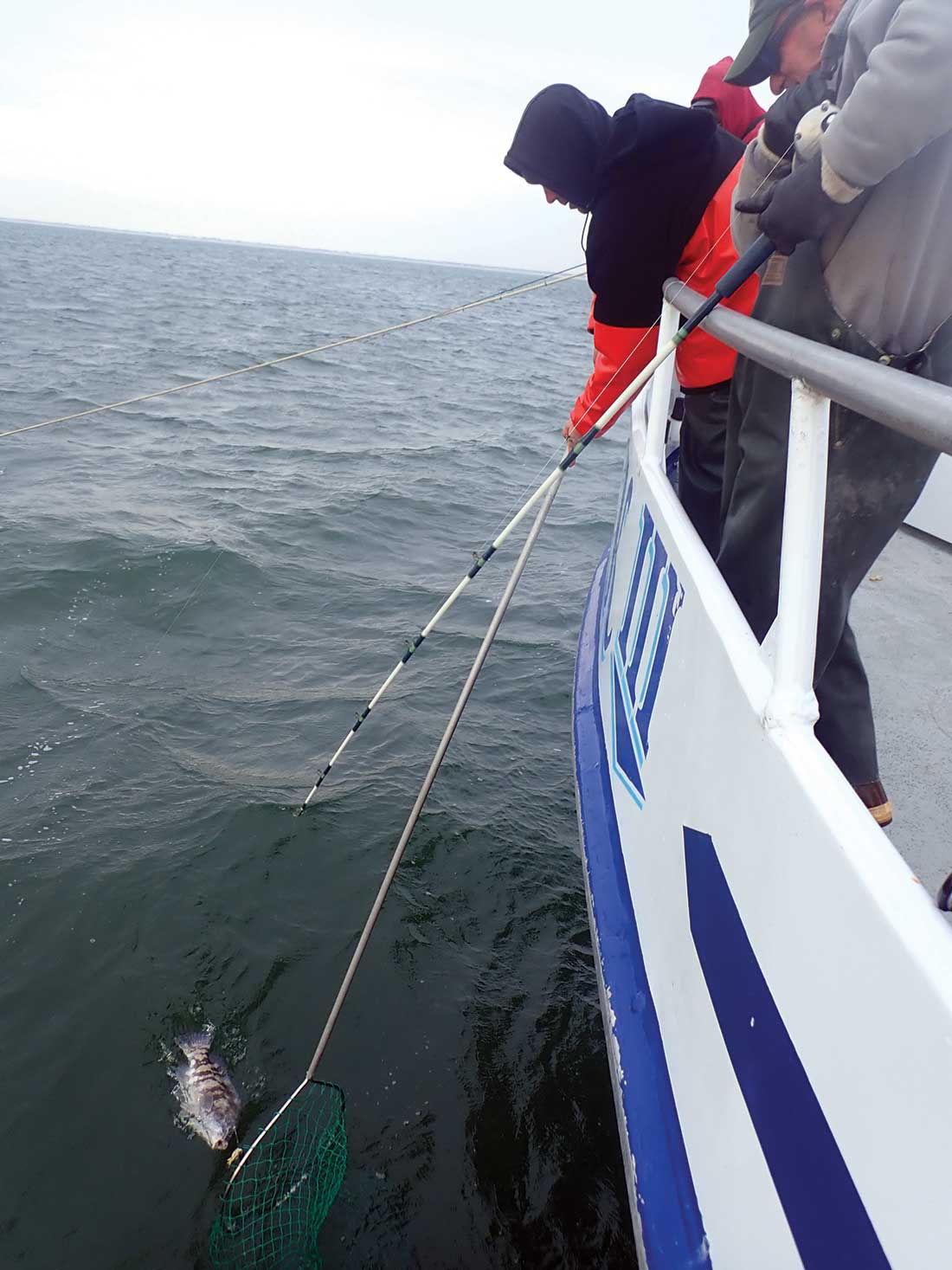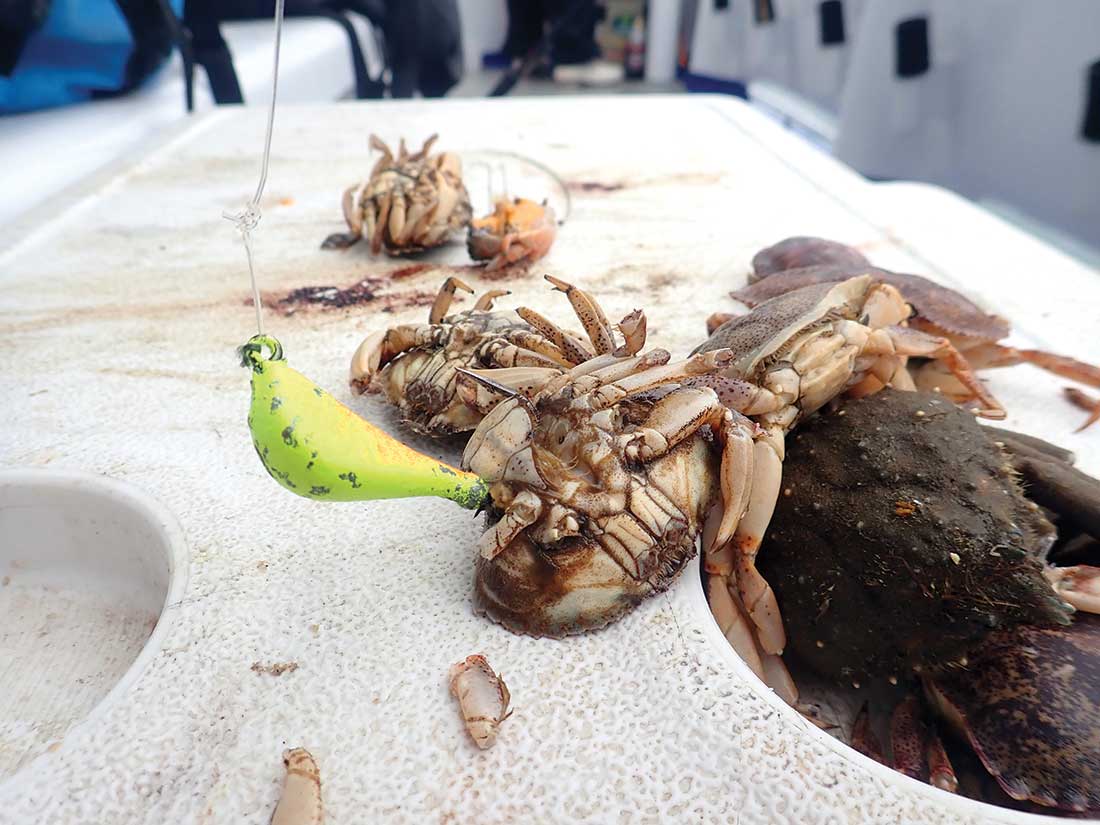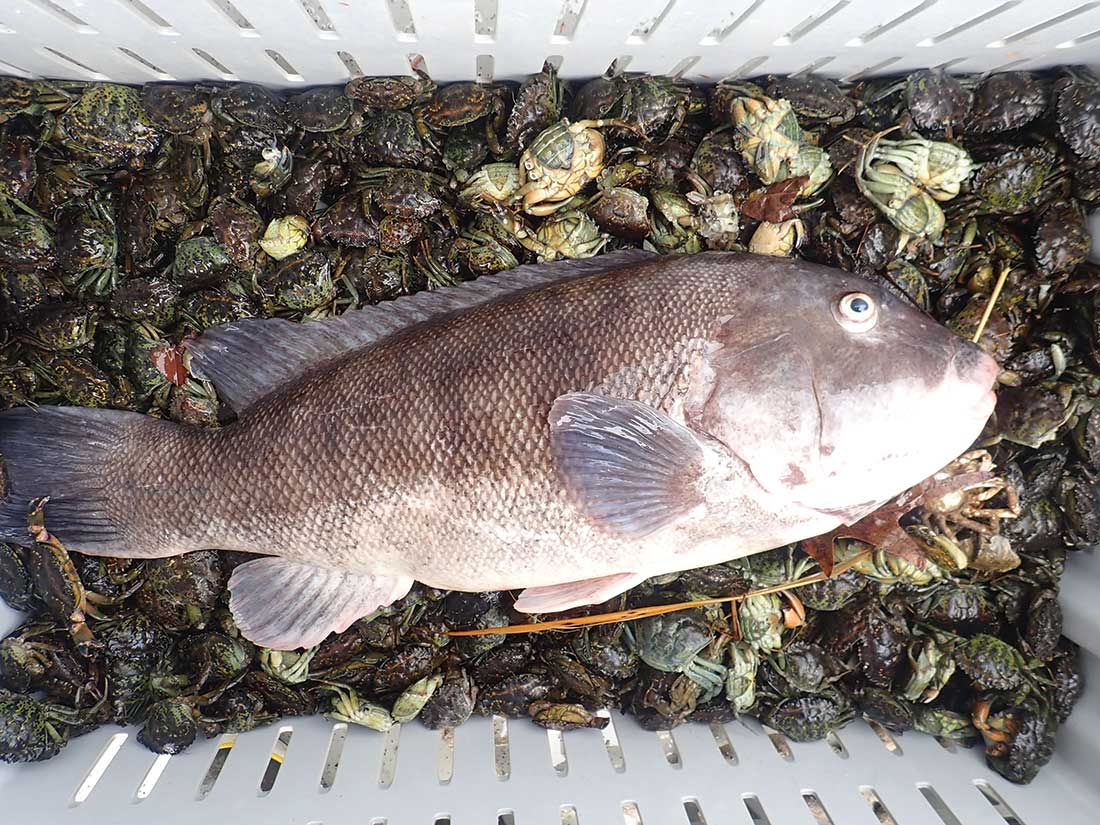Pro tips for winter wrecking at the Jersey Shore.
A new year rings in new opportunity. Blackfish addicts are now foaming at the mouth as January ushers in prime time chances at trophy tautog that reach the 10-pound mark and greater, even pushing into the 15- to 18-pound bracket.
Dealing with colder waters, deeper depths and ice on the guides, there’s a method to the madness of targeting tautog in January.

The Conditions
Blackfish will follow environmental conditions that favor their feeding habits. “We are looking to find water temperatures that range between 42 and 53 degrees,” said Capt. Matt Sosnowski of the Norma K III party boat out of Point Pleasant. “If we can find that sweet spot between 44 and 48 degrees in January, then the bite will most definitely be on. It’s when the water dips below 42 degrees that we see fish starting to get a bit of lockjaw and then you really have to start working hard for a bite as they scratch at baits rather than chomping on them.” Sosnowski also said that the threshold for the tautog water temp is around 42 degrees, anything less it’s a crapshoot. “I have had bites in 37-degree water but it’s a real challenge then,” he added.
Water clarity also plays a big part. Generally, northwest winds dominate in January, and if you can line up overcast gray days with gray tingy water, that’s a recipe for success. Stay away from crystal clear waters. “If the water is too clean, it’s not as good,” noted Capt. Matty. “When you can see the crab bait drop down and still see it like 20 feet down, the chew is not going to be hot and heavy. Blackfish like a little tinginess to the water and they go fickle on a bite when it’s too clean and clear. My advice is to look to fish two or three days after a big storm blow when it settles out a bit as the water still has a little stain, but not too much.”

As you want to follow those comfortable water temperatures, Capt. Matt will try out different depths to locate the prime areas. “You have to keep your finger on the pulse of what’s happening day to day, but generally speaking, we look to start in the 70- to 80-foot range, then work out from there. January usually means fishing in 80- to 120-foot depths, but by February they are out to the 140-foot depths looking for that warmer water on the bottom that can be mid 40s for them to bite.”
The Right Spot
There are reasons January always seems to put up those titanic tog you hear about in the 10-, 15- and even 20-pound class. “Bigger fish are feeding in January,” said Sosnowski. “They are feeding for the winter solstice when they shut down so they fatten up on their last chance.” Keying in on the right spot is paramount for success. Tog will hunker down in the pits of high profile wrecks, offshore rockpiles, as well as in holes and low relief points on barges and rock rubble. Perennial hot spots include the Varanger, Resor Wreck, Cape May Reef, Atlantic City Reef, Farms and 17 Fathoms.
Work not only the hearts of the wrecks and other structure areas, but adjust your anchor to ply the edges of the expanse as well. Some of the largest tog caught are laying on points of structure change, i.e on the side of the barge or bottom where the wreck meets the sand, and the drop-off from the last portion of the root of the wreck is where they like to hang out and pick off crabs and assorted meals as they flow over onto the sandy bottom off the ledge.

But don’t get too focused on a favorite spot if it isn’t producing. “Spot hopping is a must,” Sosnowski added. “In November you can have a solid fishery going day after day and keep going back to the same spot, but in January the bite can be lights out one day at a certain spot, then it will shut off the next day with no rhyme or reason or change in environmental conditions; they just shut off or move around more.”
Capt. Matt adds another piece of advice, “Winter fishing is all about patience. You may know those fish are on that spot, but won’t bite. You need to wait them out if you know they are there, then something, I am still not sure what it is or why, but the bite will turn on immediately and all across the deck people will be hammering fish.”
Tough Tackle
Without a doubt, strong and resilient rods and reels are a must when muscling out pipe-hitting whitechinners. For dropping bottom rigs, a conventional Shimano Terramar TMCE70H 7-foot matched with a Shimano Talica or Torium 20 spooled with 50- to 65-pound Power Pro and a 10-foot top shot of 50- to 60-pound TrikFish monofilament leader will work to bounce bank sinkers and crab baits. Sosnowski will even go heavier with the leader stating, “Use heavy leaders this time of year like 60- to 80-pound as the bulldogs will be around, and you do not want to miss or break off a lifetime fish.”
With the advent of the popular practice of blackfish jigging nowadays, fish a medium power fast action 7-foot spinning rod such as a 7-foot Shimano Terramar TMSE70MH matched with a Shimano Stradic 6000 reel spooled with 30-pound Power Pro and a monofilament 3-foot leader of 40- to 50-pound test. Depending on the water depth and current, tie on a 1- to 3-ounce Magictail, S&S or Bottom Sweeper tog jig, testing out color patterns of chartreuse, brown/white, green/orange or straight white.

Regular bottom rigs consist of leaving the smaller size 4 to 6 Virginia hooks at home, and breaking out the 5/0 to 6/0 Mustad or Gamakatsu octopus hooks to up your game. Many tog pros opt for a snafu rig, a two-hook contraption that they can sink both points into a whole whitelegger or green crab. Hook each hook point through the back flanks of the carapace and out the top above the back legs. Whole crabs will tempt the largest of tog to jump on the offering, but the key is to feed the crab to them and not to set the hook immediately.
Big tog tend to pick up the bait and instead of the usual tap, tap-tap, type of hit, you will actually feel like your sinker has left the bottom and you will get slack line but feel some movement. That’s when the big blackfish has picked up the crab in its mouth and is beginning to move off with it. Let him chew it and suck it down for a two to three count, then set back on him. Immediately, hold the rod tip high and crank your high speed retrieve reel as fast as you can. You need keep the screws tight on him to get him a good 10 to 15 feet above the structure.
January togging is all about filling the cooler with 3- to 8-pound fish and knocking off true bulldogs over the 10-pound mark. Now’s your time to shine. Hit the tog grounds and enjoy the hot bite in the cold weather!
| LOCAL WINTER LIMTS |
|---|
| Delaware: 16-inch minimum (four fish bag) from January 1 – May 15New Jersey: 15-inch minimum size (four fish bag) from January 1 – February 28, New York: |





